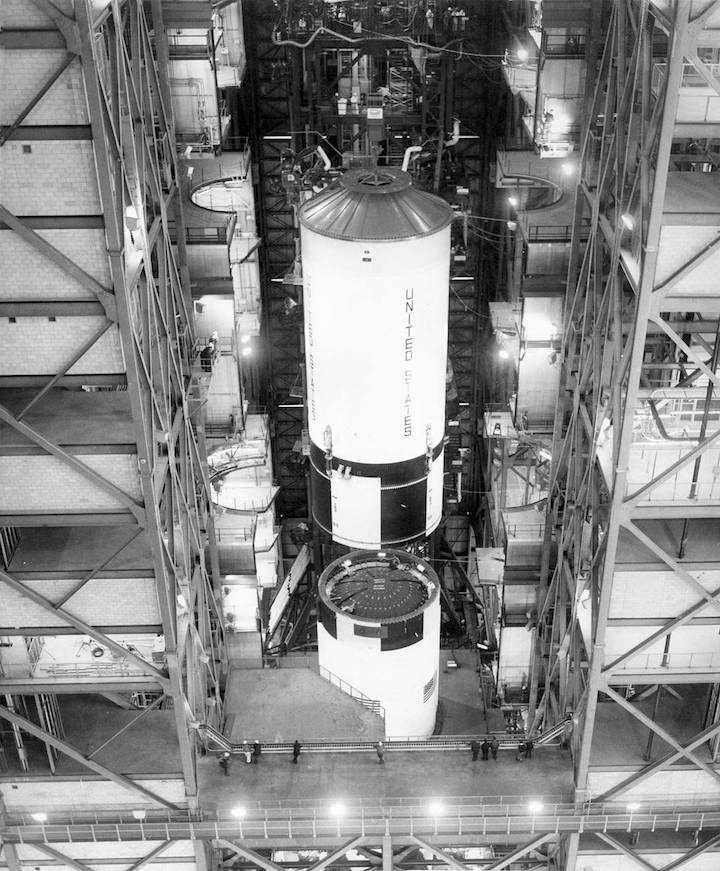16.07.2018

This week in 1969, Apollo 11 launched from NASA’s Kennedy Space Center. Here, the Instrument Unit is lowered into place atop the third stage of the Saturn V launch vehicle in the Vehicle Assembly Building at Kennedy. Designed at NASA’s Marshall Space Flight Center, the Instrument Unit served as the "nerve center" for the Saturn V, providing guidance and control, command and sequence of vehicle functions, telemetry and environmental control. Marshall designed, developed and managed the production of the Saturn V rocket that took astronauts to the moon. Today, Marshall is developing NASA's Space Launch System, the most powerful rocket ever built that will be capable of sending astronauts deeper into space than ever before, including to Mars. The NASA History Program is responsible for generating, disseminating, and preserving NASA’s remarkable history and providing a comprehensive understanding of the institutional, cultural, social, political, economic, technological, and scientific aspects of NASA’s activities in aeronautics and space. For more pictures like this one and to connect to NASA’s history, visit the Marshall History Program’s webpage. (NASA)

The primary objective of Apollo 11 was to complete a national goal set by President John F. Kennedy less than a decade earlier: to perform a crewed lunar landing and return to Earth. An estimated 530 million people watched astronaut Neil Armstrong's televised image and heard his voice describe the event as he took "... one small step for a man, one giant leap for mankind" four days later. This photo shows the Saturn V's second stage being lowered into place atop the first stage in the Vehicle Assembly Building at NASA's Kennedy Space Center. The Saturn V rocket was designed, managed and built by NASA's Marshall Space Flight Center.
The NASA History Program is responsible for generating, disseminating and preserving NASA’s remarkable history and providing a comprehensive understanding of the institutional, cultural, social, political, economic, technological and scientific aspects of NASA’s activities in aeronautics and space. For more pictures like this one and to connect to NASA’s history, visit the History Program’s webpage.

Quelle: NASA
